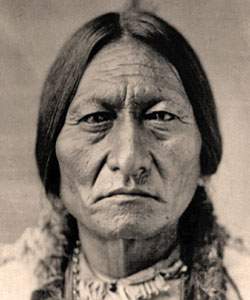Sitting Bull (American National Biography)
Scholarship
A member of the Hunkpapa tribe, one of seven tribes of the Teton or Western Sioux, or the Lakota, who inhabited the Plains between the Missouri River and the Bighorn Mountains, Sitting Bull achieved renown in early manhood both as an accomplished buffalo hunter and as a warrior in raids against Crow, Assiniboine, Flathead, and other tribal enemies. His war record brought him many honors as well as high rank in prestigious men's societies, and in 1857 he was designated a war chief of the Hunkpapas.
Sitting Bull also became a holy man, one of a select few who had mastered the sacred powers of the natural world and the ceremonies that influenced human well-being. Many times he danced the various orders of the Sun Dance and sacrificed his flesh in token to Wakantanka. Unlike most holy men, whose rites and devotions solicited benefit for individuals, Sitting Bull nearly always sought the welfare of his tribe. By middle age he was widely admired by his people as an exemplar of the four cardinal virtues of the Tetons: bravery, fortitude, generosity, and wisdom.
Sitting Bull also became a holy man, one of a select few who had mastered the sacred powers of the natural world and the ceremonies that influenced human well-being. Many times he danced the various orders of the Sun Dance and sacrificed his flesh in token to Wakantanka. Unlike most holy men, whose rites and devotions solicited benefit for individuals, Sitting Bull nearly always sought the welfare of his tribe. By middle age he was widely admired by his people as an exemplar of the four cardinal virtues of the Tetons: bravery, fortitude, generosity, and wisdom.
Robert M. Utley, "Sitting Bull," American National Biography Online, February 2000, http://www.anb.org/articles/20/20-00948.html.



